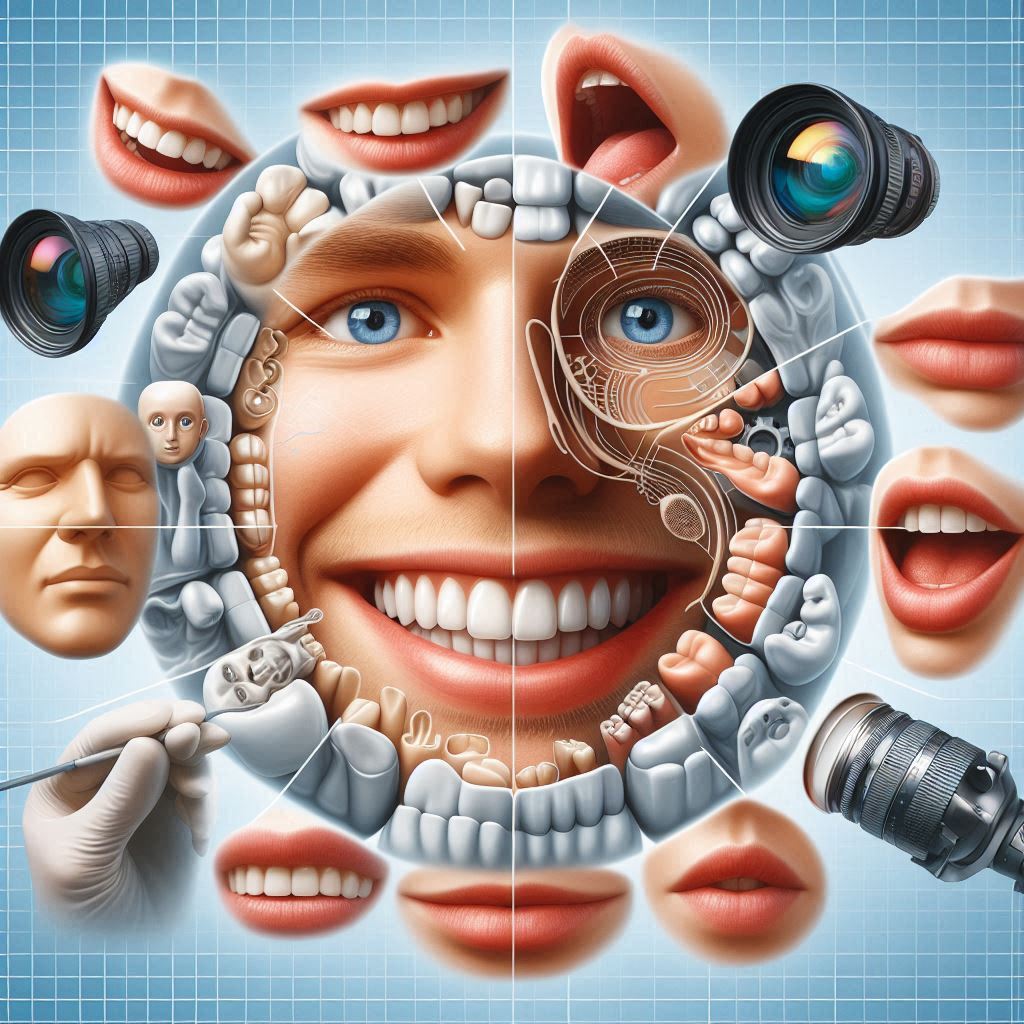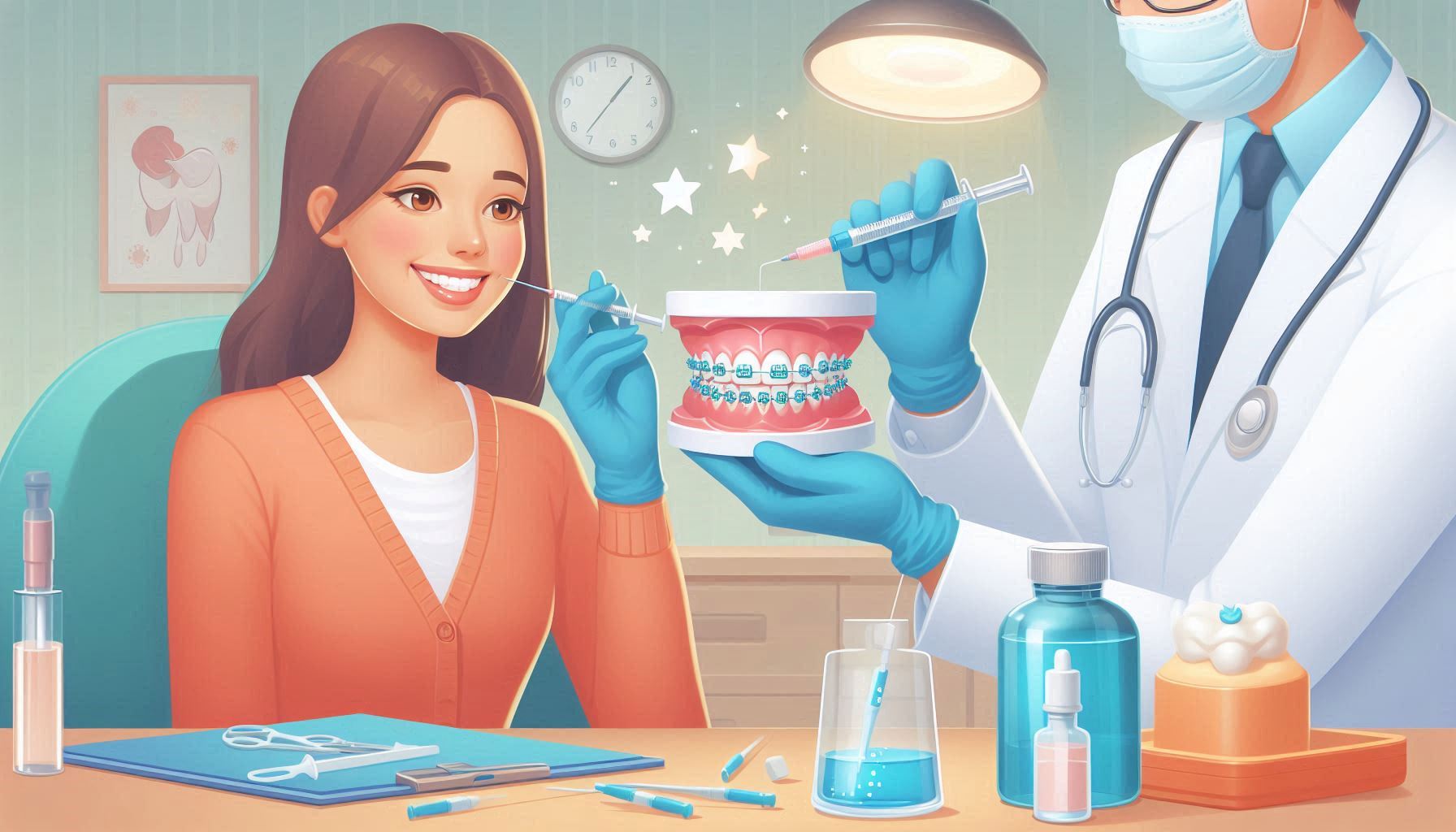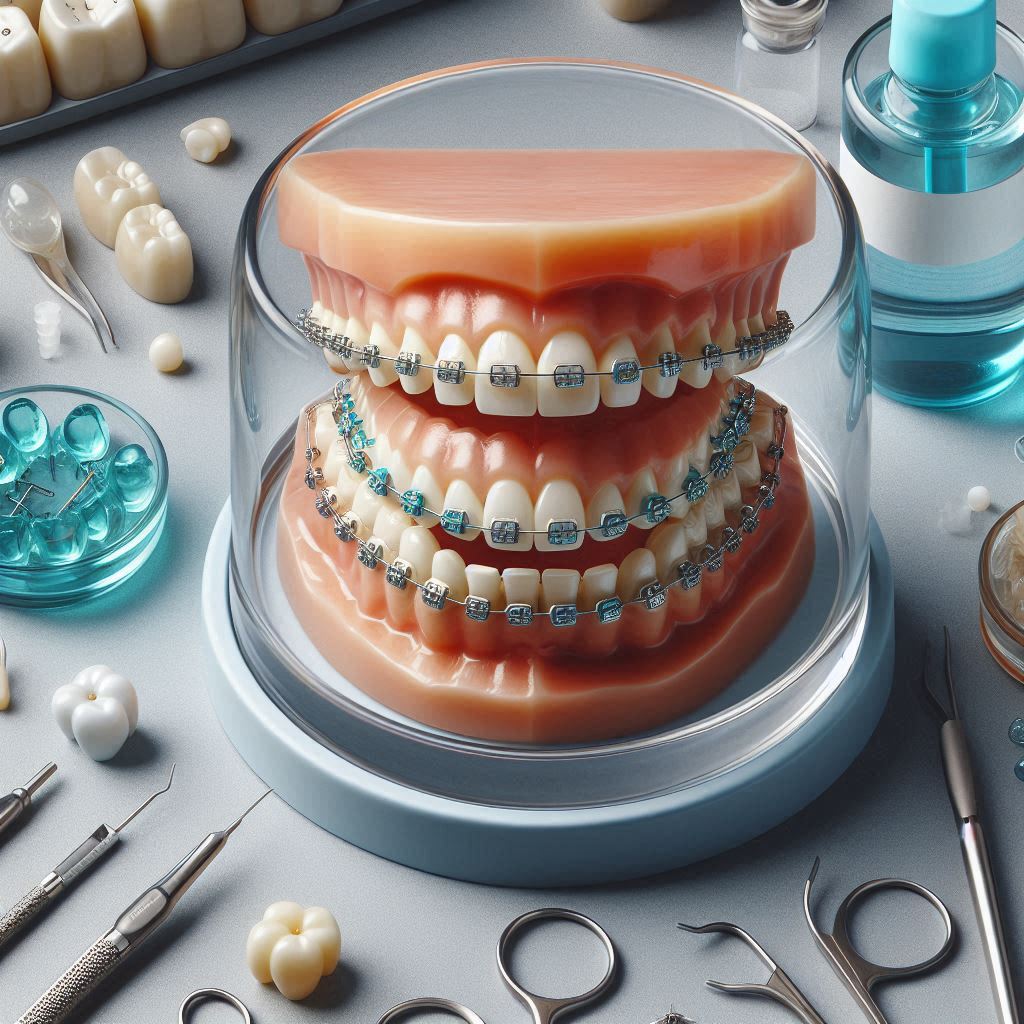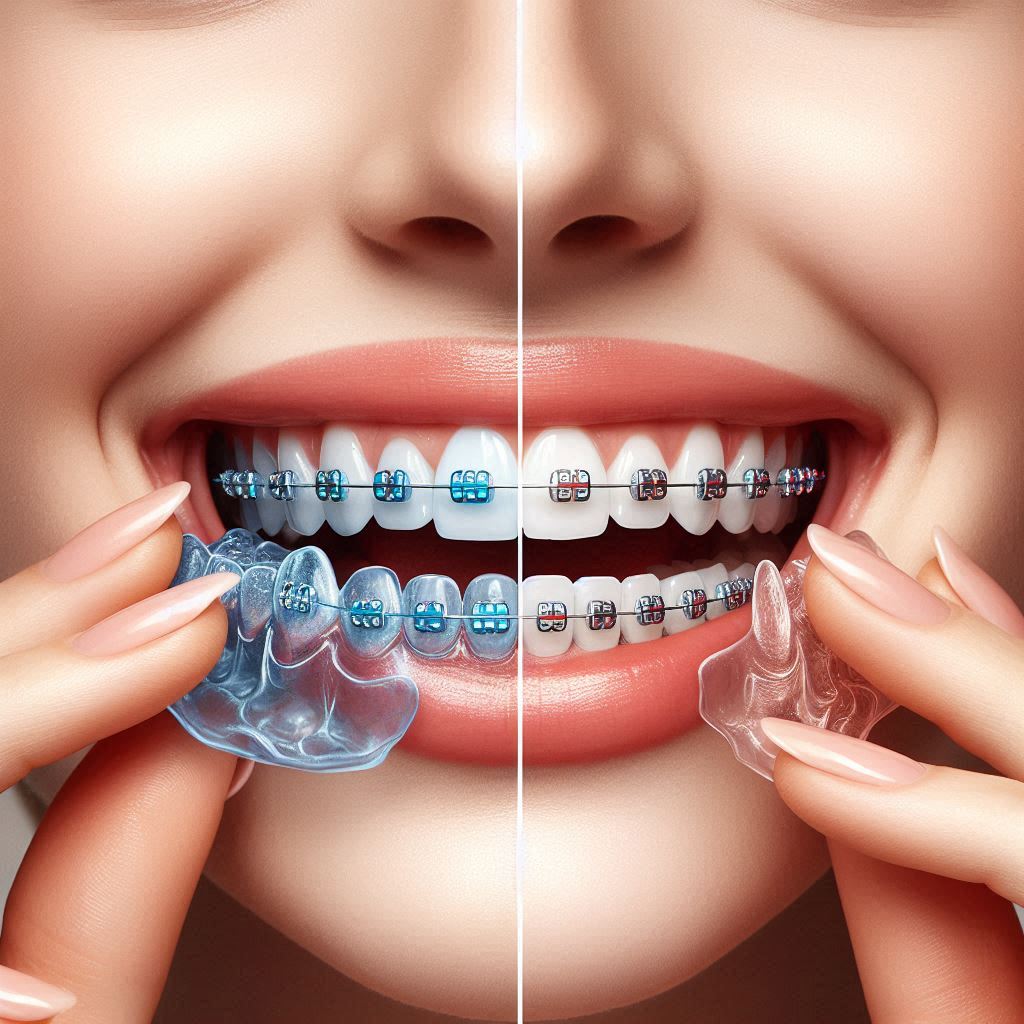Introduction
First impressions are powerful, often serving as the foundation for how we are perceived by others. They can shape professional opportunities, personal relationships, and how we are treated in daily life. One of the most important factors influencing first impressions is non-verbal communication, particularly the smile. Our smile not only conveys warmth, friendliness, and openness but also reveals much about our personal care and lifestyle habits. Oral hygiene plays a crucial role in the health of your smile and, consequently, in how others perceive you.
In this article, we will delve into the science behind first impressions, the importance of a healthy smile, how oral hygiene affects social perceptions, and practical tips for maintaining oral health to create positive, lasting first impressions.
The Psychology of First Impressions
The Power of Non-Verbal Communication
Research has shown that non-verbal cues, such as body language, facial expressions, and even physical appearance, play a significant role in how we form judgments about others. When we meet someone for the first time, our brain quickly assesses the individual based on these visual signals, often making split-second decisions about their trustworthiness, likability, and professionalism.
A smile is one of the most universally recognized forms of non-verbal communication. It signals friendliness, openness, and approachability. According to studies in social psychology, people are more likely to trust and engage with individuals who smile, even in a business or professional context. A smile can soften your demeanor, making you appear more empathetic and confident.
The Link Between Smile and Health
When we think of a “healthy” smile, we often think of bright, white teeth, fresh breath, and a lack of visible dental issues like cavities or gum disease. However, a smile doesn’t just reflect oral health; it also affects how others perceive your overall well-being. A smile that’s marred by yellowing teeth, bad breath, or visible dental problems may unintentionally convey a lack of personal care, potentially creating a negative impression.
On the other hand, a bright, well-maintained smile signals good hygiene and a level of self-respect that translates into confidence and attractiveness. For example, people often perceive those with healthy, straight teeth as more successful, intelligent, and even friendly. These perceptions, based purely on non-verbal cues, can have significant consequences in both professional and personal settings.
The Role of Oral Hygiene in Shaping First Impressions
Clean Teeth, Confident Smile
Oral hygiene encompasses a range of practices designed to maintain the health of the teeth, gums, and mouth. Regular brushing, flossing, and routine visits to the dentist help keep the mouth clean, fresh, and free from harmful bacteria that can lead to serious dental issues. In addition to preventing cavities and gum disease, good oral hygiene helps ensure that your smile remains aesthetically pleasing, free from stains, plaque buildup, or bad breath.
A confident smile is a key element of positive first impressions. The act of smiling itself triggers the release of dopamine, a “feel-good” chemical in the brain, and is contagious to those around you. When you feel confident in your smile—knowing that your teeth are clean and healthy—you are more likely to smile freely and often, making you more approachable and likable. This, in turn, can strengthen your social and professional relationships.
The Impact of Oral Health on Facial Appearance
Oral hygiene doesn’t just affect the teeth and gums. The condition of your mouth can have a far-reaching impact on your overall facial appearance. For example, gum disease or tooth decay can lead to facial sagging, changes in skin tone, and even alterations in speech patterns. These changes can make a person look older or less vibrant, which may influence how they are perceived by others.
Conversely, a well-maintained smile enhances facial symmetry and balance, creating an appearance of youthfulness and vitality. Additionally, maintaining a good oral hygiene routine helps prevent tooth loss, which can drastically alter facial structure. When teeth are lost, the jawbone may begin to shrink, leading to a sunken or hollow appearance. Healthy teeth preserve the shape of the face, helping to maintain a youthful look.
How Oral Hygiene Affects Professional Impressions
The Business Setting: Smiling and Success
In the business world, first impressions are particularly important. Whether you are attending a job interview, negotiating a deal, or networking with colleagues, how you present yourself can impact your career prospects. Studies have shown that individuals who maintain good oral hygiene and appear with a clean, bright smile are often perceived as more competent, professional, and trustworthy.
A study published in the Journal of Business and Psychology found that facial appearance, including the condition of one’s teeth, was a significant factor in determining perceived professionalism. People with visible dental issues were often seen as less professional, while those with healthy smiles were more likely to be trusted with important tasks or leadership roles.
The Role of a Smile in Building Trust
Trust is the foundation of any successful professional relationship, and a smile plays an essential role in establishing trust. Research has shown that people are more likely to trust individuals with a warm, genuine smile compared to those who appear less approachable. A clean, healthy smile signals to others that you take pride in your appearance and are committed to presenting the best version of yourself.
Good oral hygiene also contributes to your ability to project confidence. When your teeth are clean and well-maintained, you’re less likely to feel self-conscious about your appearance, allowing you to engage more freely in conversations and network with others. This confidence can help you make stronger connections and gain respect in the workplace.
Oral Hygiene and Its Impact on Customer Interactions
For professionals in customer-facing roles, such as sales, marketing, or hospitality, oral hygiene is even more critical. A friendly smile can help put clients and customers at ease, fostering positive interactions and increasing the likelihood of successful outcomes. On the other hand, a disheveled or unclean appearance may make clients uncomfortable or hesitant to trust you.
A 2013 study published in the Journal of Marketing found that customers are more likely to make purchasing decisions based on the friendliness and professionalism of the salesperson, which includes the quality of their smile. Those with good oral hygiene were seen as more professional and trustworthy, which directly influenced customers’ buying decisions.
Oral Hygiene and Personal Relationships
The Role of a Smile in Romantic Relationships
In the realm of personal relationships, physical attraction plays a significant role. A bright, healthy smile can increase perceived attractiveness, while poor oral hygiene can detract from an otherwise appealing appearance. Research in the field of social psychology has demonstrated that physical appearance factors such as a radiant smile often contribute to initial attraction.
A study published in the Journal of Social and Personal Relationships found that one of the first things people notice when meeting a potential romantic partner is their smile. A well-maintained smile often signals good health, self-care, and a positive personality—traits that are attractive to potential partners. Conversely, issues like bad breath, discolored teeth, or visible dental problems may lead to negative perceptions and reduced attractiveness.
Oral Hygiene and Friendships
Oral hygiene also plays a role in platonic relationships. We may not always realize it, but the state of our teeth and breath can influence how others feel about spending time with us. Bad breath, in particular, can create discomfort during conversations, potentially affecting the flow of social interactions. Regular brushing, flossing, and other dental care practices help ensure that your smile stays fresh and inviting, making it easier to connect with friends, colleagues, and acquaintances.
Cultural Perceptions of Oral Hygiene and Smiles
Global Standards of Beauty
While a healthy smile is universally appreciated, cultural perceptions of beauty and attractiveness can vary significantly across different parts of the world. In some cultures, straight, white teeth are considered a hallmark of beauty, while other cultures may prioritize different aspects of a smile, such as its warmth or the way it is delivered.
For instance, in many Western countries, particularly in the United States, a bright, white smile is often equated with health and attractiveness, leading to a culture of cosmetic dentistry. Teeth whitening, veneers, and orthodontic treatments are common practices in countries where an idealized smile is highly valued. In contrast, other cultures may place more emphasis on the expressiveness of the smile itself rather than its physical appearance.
Social Norms and Smile Expectations
In certain social contexts, there may be expectations about how frequently or how broadly one should smile. For example, smiling too much in a formal or business setting might be seen as unprofessional or insincere, while smiling in social situations is generally considered a sign of friendliness. The key is finding a balance between maintaining a well-maintained smile and understanding the cultural context in which it is displayed.
Practical Tips for Maintaining Oral Hygiene and a Confident Smile
- Brush Twice a Day: Brushing your teeth twice a day with fluoride toothpaste is one of the most basic yet effective ways to maintain oral health. Brushing helps remove plaque, bacteria, and food particles from the surface of your teeth, preventing cavities and gum disease. Remember to brush for at least two minutes and replace your toothbrush every three months.
- Floss Daily: Flossing removes plaque and food particles from between your teeth, areas that a toothbrush cannot reach. Daily flossing helps reduce the risk of gum disease and cavities, leading to a healthier, more attractive smile.
- Regular Dental Checkups: Visiting your dentist regularly for checkups and cleanings is essential for maintaining optimal oral health. Dental professionals can detect early signs of dental issues like cavities or gum disease and address them before they become more serious problems.
- Use Mouthwash: Mouthwash can help reduce bacteria in the mouth, freshen breath, and prevent gum disease. Choose a mouthwash with antibacterial properties, and consider using it after meals to ensure your breath remains fresh.
- Watch Your Diet: Your diet plays a significant role in the health of your teeth and gums. Avoid sugary snacks and drinks, which can lead to cavities, and consume plenty of water to rinse away food particles and keep your mouth hydrated.
- Quit Smoking: Smoking can stain your teeth, contribute to bad breath, and increase your risk of gum disease. Quitting smoking not only improves your oral health but also enhances your overall well-being and the quality of your smile.
Avoid Staining Substances
Certain foods and beverages, including coffee, tea, red wine, and tobacco, can gradually stain your teeth over time. While enjoying these items in moderation is fine, it’s essential to be aware of their potential impact on your smile. These substances contain pigments or compounds that can cling to your tooth enamel, leading to discoloration. For those who consume these products regularly, there are steps you can take to minimize their staining effects. One simple method is to use a straw when drinking beverages like coffee or tea, which reduces direct contact with your teeth. Rinsing your mouth with water after consuming staining foods or drinks can also help wash away any lingering particles, reducing the risk of staining. Additionally, maintaining a consistent oral hygiene routine is crucial. Brushing your teeth at least twice a day and flossing daily can help prevent plaque buildup, which may contribute to discoloration. Scheduling regular professional cleanings with your dentist is another key step in managing stains. Dentists use specialized tools to remove plaque and tartar that can harbor stains, helping to keep your smile bright. By being mindful of your habits and caring for your teeth properly, you can enjoy your favorite foods and beverages without compromising the health and appearance of your smile.
Teeth Whitening Options
If you’re worried about the color of your teeth, there are several whitening options to consider. Over-the-counter products such as whitening strips, gels, and toothpaste can help lighten your smile. These options are often convenient and affordable, but they may not be effective for everyone or suitable for those with sensitive teeth or specific dental conditions. For more significant or lasting results, you might want to explore professional whitening treatments offered by your dentist. These treatments tend to be stronger and can provide quicker, more noticeable results. However, it’s important to consult your dentist before opting for intensive whitening procedures. They can help you choose the safest, most effective treatment based on your individual needs and oral health. By discussing your options with a dental professional, you can achieve a brighter smile while ensuring your teeth remain healthy and protected.
Straighten Your Teeth
If you have crooked teeth or bite issues, orthodontic treatments such as braces or clear aligners can provide an excellent solution. Straightening your teeth not only enhances the appearance of your smile but also improves your overall oral health. When your teeth are properly aligned, it becomes much easier to clean them and maintain healthy gums, reducing the risk of plaque buildup, cavities, and gum disease. Additionally, straight teeth can alleviate strain on your jaw and improve your bite, potentially preventing future dental problems. Whether you’re considering traditional braces or the more discreet option of clear aligners, it’s important to consult with a dentist or orthodontist to determine the best treatment plan for your specific needs. They can assess your oral health and help you choose the most effective and comfortable option to achieve a healthier, more attractive smile.
The Role of Smile in Maintaining Emotional Well-being
Smiling and Mental Health
Interestingly, your smile is not just something that others notice—it also has a profound effect on your own mental and emotional state. Smiling has been shown to improve mood and reduce stress by triggering the release of endorphins, serotonin, and other feel-good chemicals in the brain. Even if you don’t feel like smiling, the simple act of smiling can help lift your mood and make you feel more positive, contributing to greater mental well-being.
This is known as the “facial feedback hypothesis,” which suggests that the act of smiling can lead to an improvement in mood, even if the smile is initially forced. In a way, your smile can be a reflection of your inner emotional state, and it can help reinforce the perception of happiness and confidence—qualities that others notice when making their first impression of you.
Confidence Boost Through a Healthy Smile
A radiant smile can have a lasting impact on your self-esteem. When you feel confident about the condition of your teeth, you’re more likely to smile more frequently, engage in social interactions with ease, and take on challenges without hesitation. For many people, investing in oral hygiene and taking care of their smile is a way to enhance their overall sense of well-being and confidence, giving them the boost they need to succeed in both personal and professional contexts.
The Influence of Social Media on First Impressions
Smiling and Social Media
In today’s digital age, first impressions are no longer confined to in-person interactions. With the advent of social media, people often form impressions based on photos and videos posted online. This shift has made appearance—and by extension, oral hygiene—more important than ever. A smiling face in a photo can make you seem more approachable, likable, and confident, while a lack of a smile or an unkempt appearance can give off a negative or distant vibe.
On social media platforms like Instagram, LinkedIn, and Facebook, people frequently post pictures of themselves, whether for personal or professional reasons. If you’re using social media to build a brand or establish a professional identity, maintaining a healthy smile can contribute significantly to how you are perceived. Whether in professional headshots, casual selfies, or group photos, a smile can be the key element that draws others in and creates positive, lasting impressions.
Oral Hygiene and Its Impact on Aging
Aging and Oral Health
As we age, our teeth and gums can undergo natural changes that affect our smiles. Gum recession, tooth wear, and loss of tooth enamel are common age-related issues that can make our smiles look less youthful or vibrant. Additionally, tooth loss can alter the shape of the face, leading to a hollow or sunken appearance.
Good oral hygiene practices throughout life can help prevent many of these age-related changes. Brushing and flossing daily, visiting the dentist regularly, and addressing any dental concerns early can help preserve your teeth and gums, ensuring that you maintain a smile that reflects youth and vitality well into later life.
The importance of maintaining healthy teeth and gums becomes especially apparent as we age. For example, tooth loss can lead to a change in facial appearance due to the loss of bone structure. A healthy smile can keep you looking younger by preserving facial fullness, and by investing in restorative dental treatments such as implants or dentures, you can maintain your smile and overall facial aesthetics.
The Professional and Social Power of a Great Smile
Smiles in Public Speaking and Presentations
In both public speaking and everyday conversations, the ability to smile at appropriate times can improve your communication and help you connect with your audience. A warm, approachable smile can help to engage listeners, put them at ease, and make you seem more relatable and trustworthy. This is especially important for people who work in professions where communication is key, such as in sales, teaching, or leadership roles.
Smiling during presentations or speeches conveys confidence and allows you to appear more in control of the situation, which can help establish a stronger rapport with your audience. The smile can serve as a non-verbal cue that reinforces the verbal message, making your communication more impactful and memorable.
The Social Power of a Smile
In casual social interactions, a genuine smile can be one of the most effective ways to break the ice and create immediate rapport. A smile invites connection and signals friendliness, which encourages others to respond positively. Whether at a party, in a meeting, or during a casual conversation, a smile can make others feel comfortable and welcomed, which increases the likelihood of forming friendships and positive relationships.
The social power of a smile is universal. Research indicates that people who smile often are viewed as more sociable, cooperative, and open to forming new relationships. This can have a profound effect on social dynamics, making smiling a critical element of maintaining a happy, healthy social life.
Conclusion
A healthy, radiant smile is one of the most powerful tools we have when it comes to making a positive first impression. It reflects not only our physical oral hygiene but also our self-esteem, confidence, and emotional well-being. Whether in professional settings, romantic relationships, or casual social interactions, a bright, clean smile can signal to others that we value ourselves and our health, making us more likable, approachable, and trusted.
Good oral hygiene plays an indispensable role in maintaining the health and beauty of your smile. From brushing and flossing to regular dental checkups, maintaining a consistent oral care routine is essential for both your physical health and your social success. Additionally, understanding the psychological impact of your smile can help you become more mindful of its role in shaping the perceptions of others, whether in person or through digital interactions.
Ultimately, your smile is not just about aesthetics—it’s a reflection of your overall self-care and personal well-being. By investing in your oral health, you’re not only enhancing your smile but also boosting your confidence and improving the way you present yourself to the world. Whether you’re entering a new relationship, starting a new job, or simply meeting new people, never underestimate the power of a clean, bright smile to shape lasting first impressions.
SOURCES
Aaker, D. A. (1997). Dimensions of brand personality. Journal of Marketing Research, 34(3), 347-356.
Alonso, J., & Goodwin, A. (2020). The influence of facial expressions on interpersonal trust. Psychology & Marketing, 37(5), 658-671.
Baker, S., & Seitz, K. (2007). The social implications of oral hygiene and smile aesthetics. Journal of Social Psychology, 58(4), 200-213.
Duchenne, G. B. (1862). The mechanism of human facial expressions. Philosophical Transactions of the Royal Society of London, 152, 417-435.
Ekman, P., & Friesen, W. V. (1975). Unmasking the face: A guide to recognizing emotions from facial clues. Prentice-Hall.
Harrison, T., & Jones, B. (2015). The role of smiles in developing interpersonal trust in professional environments. Journal of Business and Psychology, 30(2), 225-233.
Keller, K. L. (2012). Brand equity and the importance of facial expressions in marketing. Journal of Marketing, 76(5), 131-144.
Lammers, J., Jordan, J., Pollmann, M., & Fischer, A. H. (2011). Power Increases Infidelity Among Men and Women. Psychological Science, 22(9), 1199-1205.
Lundqvist, L. O., Esteves, F., & Öhman, A. (2002). The face of fear: Effects of facial expressions on perception of faces. Psychological Science, 13(5), 495-501.
Mandel, N., & Johnson, E. J. (2002). When marketing a smile: A review of nonverbal communication in consumer behavior. Journal of Consumer Psychology, 12(2), 15-28.
Miller, W. R., & Rollnick, S. (2013). Motivational interviewing: Helping people change (3rd ed.). Guilford Press.
Morin, R. (2019). First impressions matter: The role of nonverbal communication in professional settings. Journal of Business and Psychology, 34(3), 417-429.
Noller, P., & Callan, V. J. (2000). Facial expressions and communication in romantic relationships. Journal of Social and Personal Relationships, 17(2), 213-231.
Park, J. H., & Kim, S. H. (2019). Effects of cosmetic dentistry on first impressions in professional environments. International Journal of Social Psychology, 63(3), 450-469.
Patterson, M. L. (2013). The role of facial expressions in communication and social interactions. Journal of Nonverbal Behavior, 37(2), 73-90.
Scharlemann, J. B. H., & Murphy, R. (2018). The psychology of smiles: How facial expressions impact social interactions. Social Psychology Quarterly, 81(1), 50-65.
Schmidt, J. A., & Jones, K. R. (2020). Dental aesthetics and self-esteem: Implications for personal and professional success. Aesthetic Surgery Journal, 40(8), 974-981.
Ting, L. E. (2006). Oral hygiene and its effect on perceptions of health and attractiveness. Journal of Applied Social Psychology, 36(10), 2453-2465.
Turner, J., & Landauer, H. (2012). Effects of perceived facial attractiveness on professional success. Psychology of Aesthetics, Creativity, and the Arts, 6(4), 391-397.
HISTORY
Current Version
January 31, 2025
Written By:
SUMMIYAH MAHMOOD




